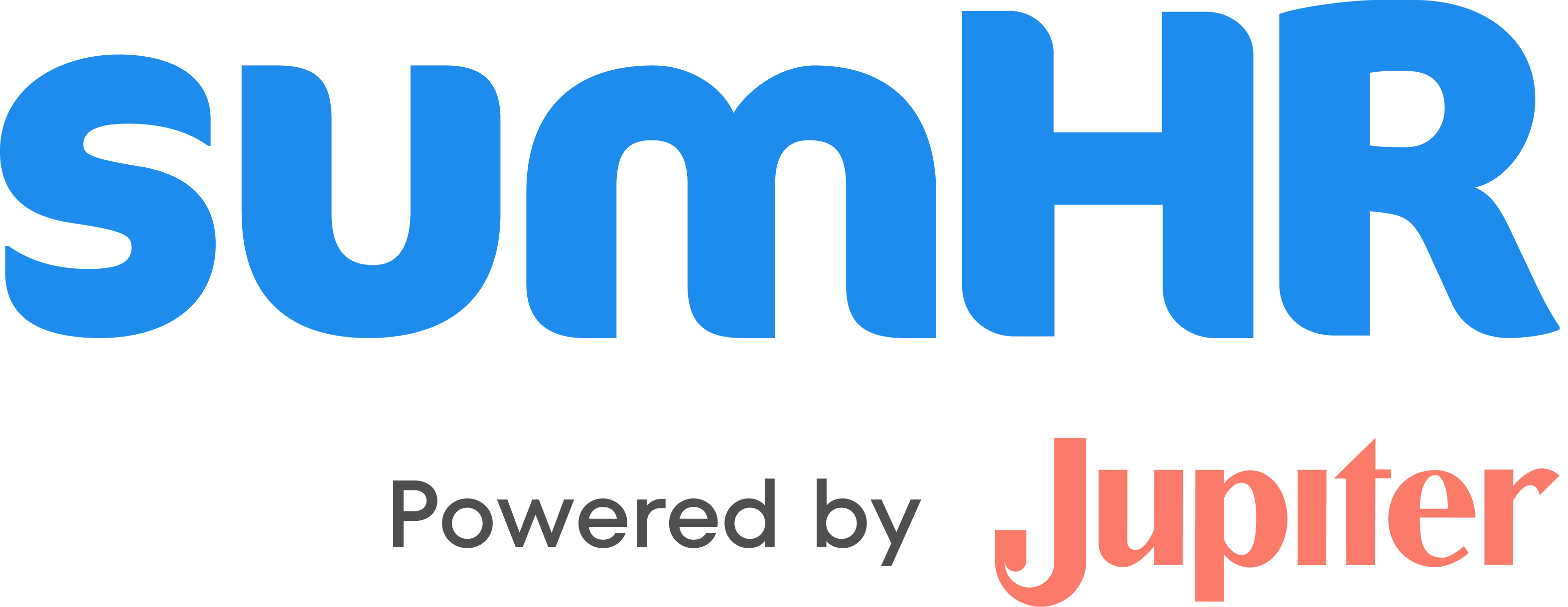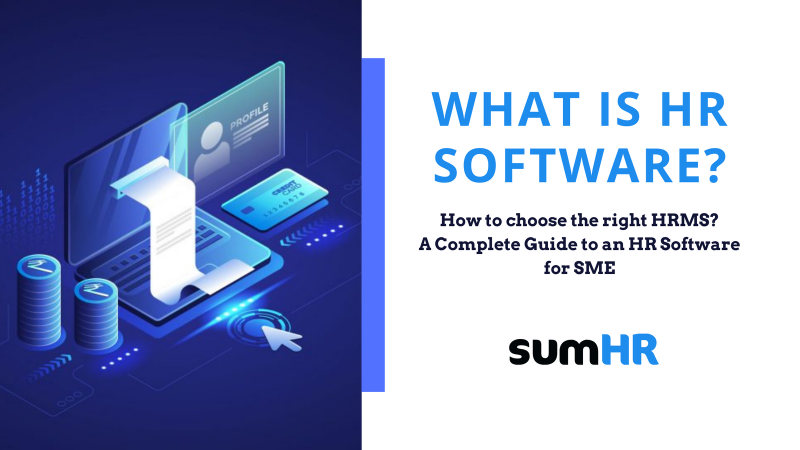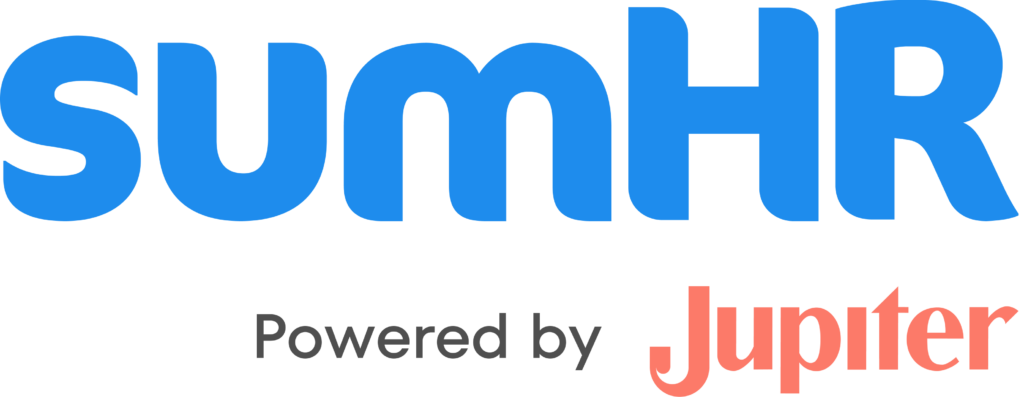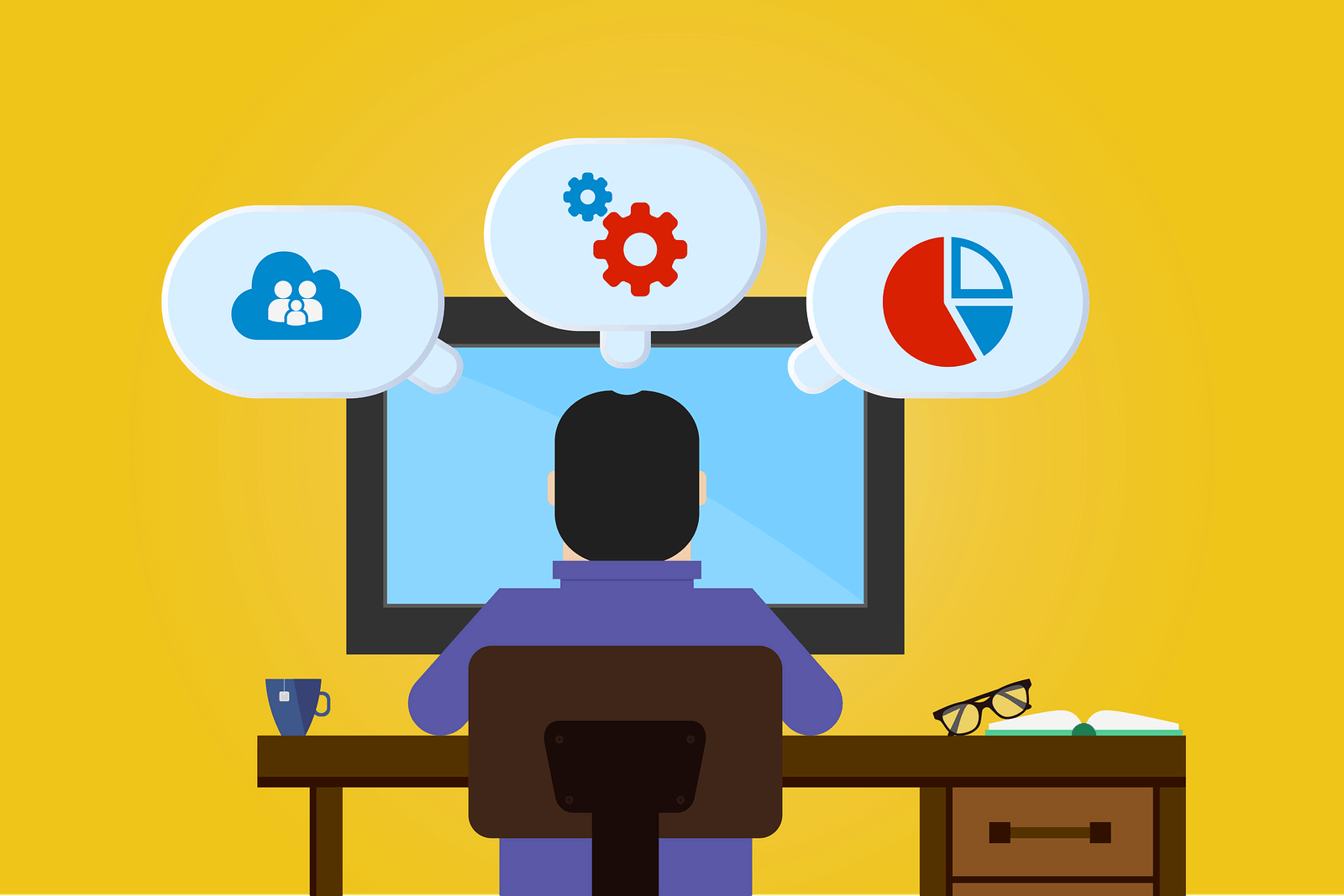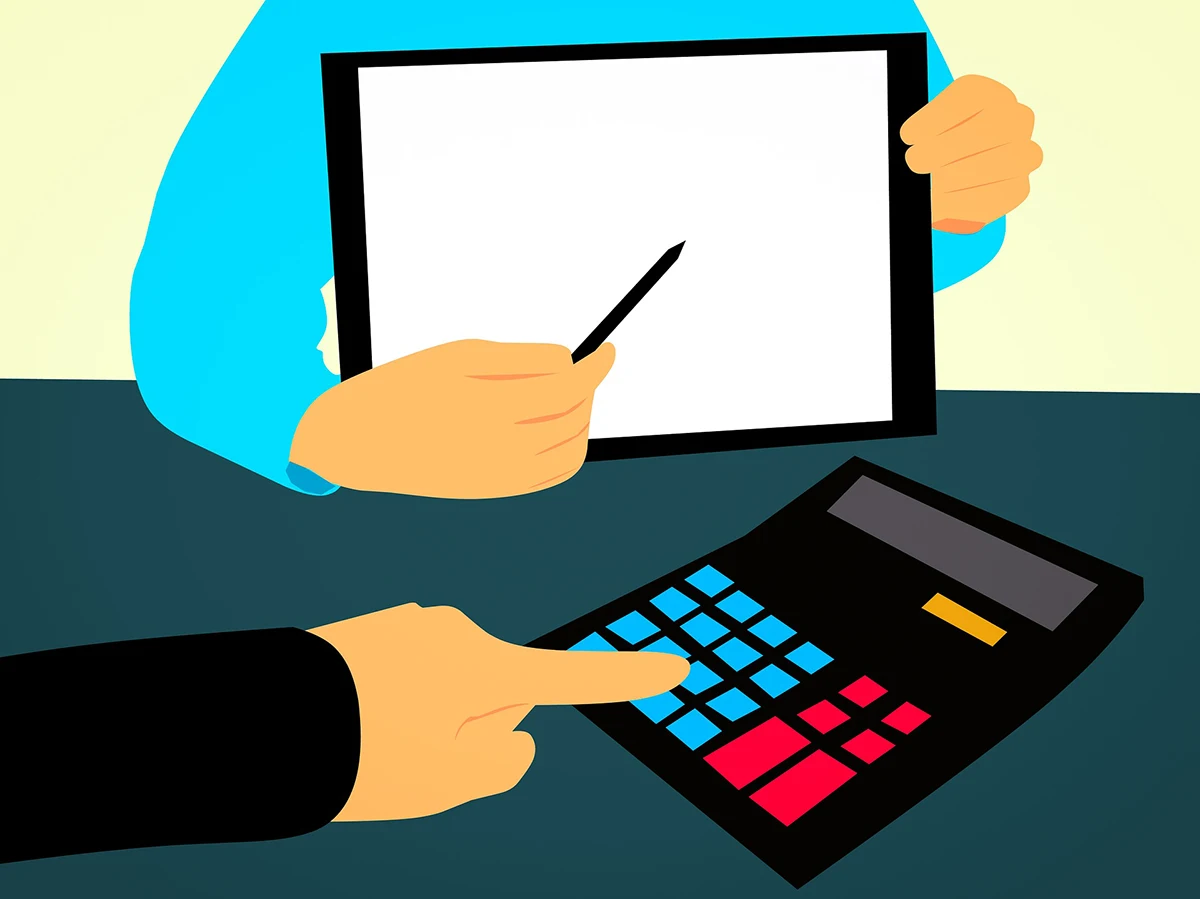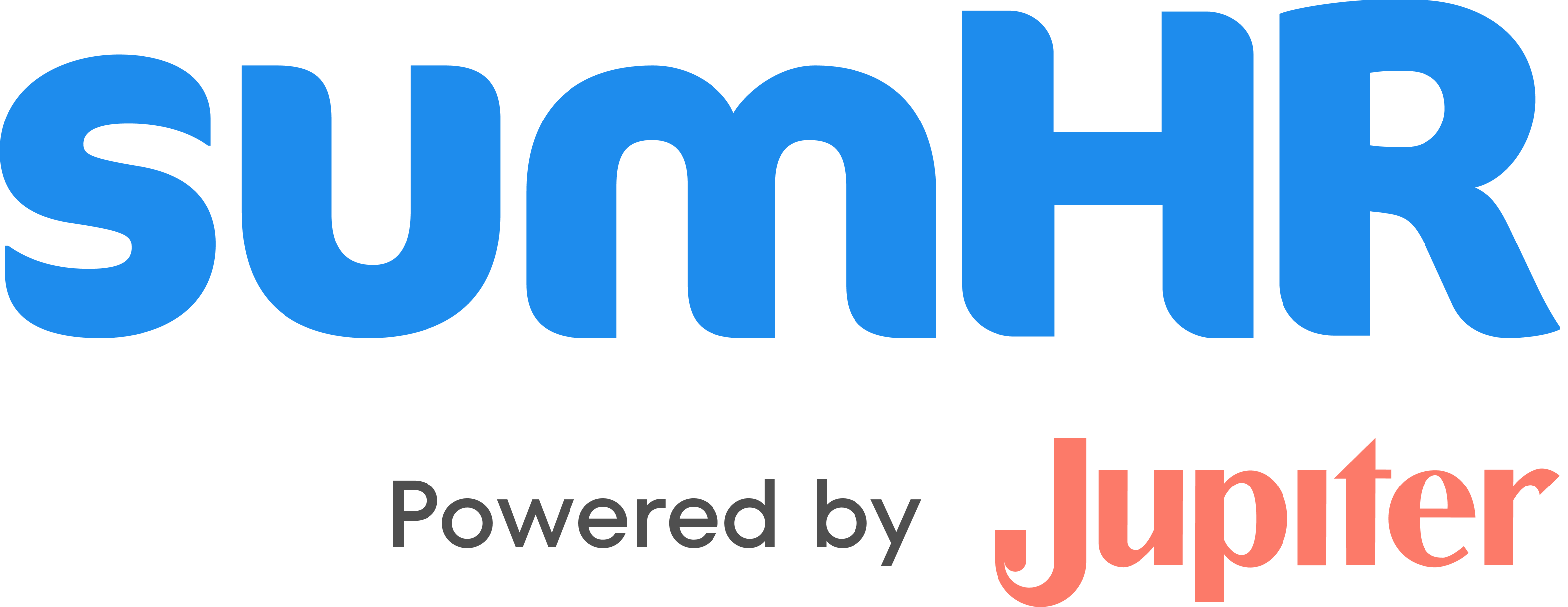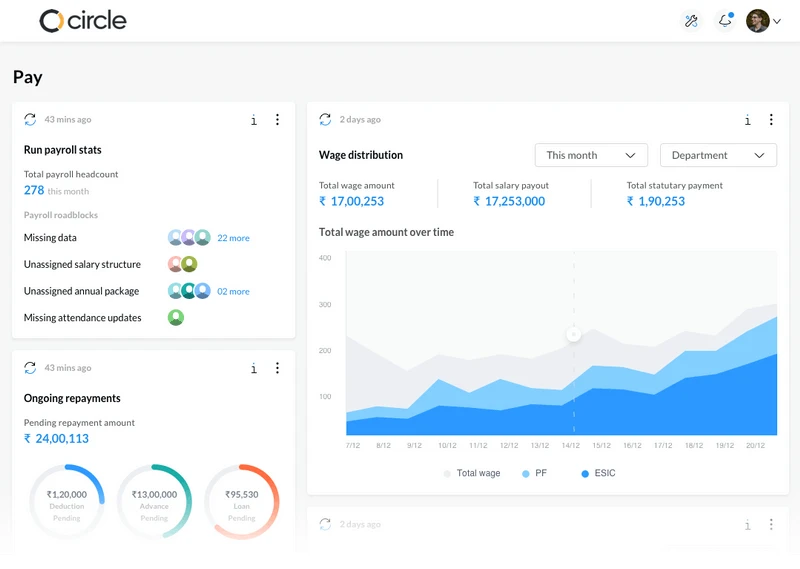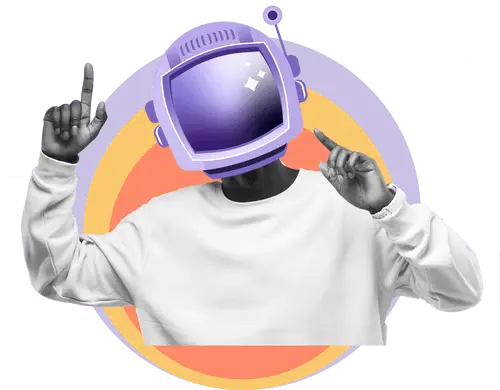Have you ever heard of HR Software?
Today many companies are offering HR & Payroll tools that make lives easier for HR teams at your organization. Although it is one of the most niche tools, it can be very beneficial for small and medium scale businesses. (SME’s)
So, let us dive deeper into some core HR tools, their functions and responsibilities.
Many people are unaware of exactly what is HR software. So let’s address your concerns on HRMS and its functions.
What is HR Software?
HR software or HRMS is an ideal tool for organizations to effortlessly manage HR processes. It empowers a company with access, management, and automation of various organisational and employee records.
This HRM software also takes care of the complete payroll system of an organization and automates all payroll-related processes via desktop & mobile app as well. When you opt for smart software solutions, you can do away with bulky files of documents and salary slips.
You can view and address tasks like filing taxes, deductions, funds, benefits, loans, and in this user-friendly payroll software.
The best part of an human resource management system platform is that it helps in reducing the number of manual tasks that the human resources department has to perform. This, in return, reduces the possibility of human errors.
Types / Features of HR Software?
Different businesses use different types of human resource software. Each of these digital solutions have unique characteristics that are best suited for their needs. Let us understand some of the HR solutions that organizations commonly use.
1. Human Resources Information Systems (HRIS):
An HRIS software helps the hiring managers control data to easily manage employees. This platform collects and stores information related to the employees.
It consists of details related to the entire employee life which includes past professional experiences and performance reviews and appraisals. Some smarter HRIS software includes additional features and modules such as benefits management options, time tracking, succession planning, payroll management, document management etc. that make daily HR chores simpler.
2. Human Capital Management (HCM)
An HCM software offers several applications designed for assisting, tracking and developing of employees. This people management software is slightly more profound when compared to HRIS software.
It is capable of establishing performance goals and tracking progress. Basically, the goal of HCM software is to strengthen the workforce with complete overview access provided to the hiring manager or the HR.
3. Human Resources Management Systems (HRMS)
HRIS software and HRMS software are not too different. HRMS software involves tracking employee records, skills, abilities, salaries, and reviews. This comprehensive software is known for automating even the most complex HR process.
Many HRMS focus on functionality but sumHR is one such unique HR Software with a intuitive user interface.
4. Applicant Tracking Systems (ATS)
This recruitment-based software is ideal to source hundreds of candidates. It also makes the hiring process & exit processes easier.
The recruitment management software is dynamically designed with algorithms that help in selecting the right fit for every position and talent management.
5. Payroll Software
Payroll software looks after the salaries, reimbursements, compensations, incentives, and complete funds-related processes. This integrated payroll solution automates the payroll and benefits the employer in terms of time.
After calculating gross income, the data-driven insights automatically calculate deductions.
These deductions include federal, state, and local taxes, insurance, and retirement savings with regard to US law.
With regards to Indian laws, it includes TDS, local taxes, health insurance and more. Read more about payroll software here.
It then calculates and generates a net salary in the form of direct deposits or paychecks. This software is an ideal choice for organizations to be classified into two subtypes:
A. Offline or On-premise Software:
Offline or on-premise software is the one that organizations install on their system. You can only access and use this it on a laptop, computer, or any other device that it is installed on.
Compared to cloud-based software, this employee self-service software is more secure. However, it is inconvenient for HR managers who travel frequently.
B. Cloud-based Software:
Today, most organizations are moving to cloud-based software due to their benefits. You can access it from any part of the world, on any device they are compatible with, and at any time during the day.
This cloud-based software also has higher storage capacities. Lastly, they empower managers with seamlessly functioning HR processes.
sumHR is one such cloud-based comprehensive HR Software for SME’s across the globe.
6. Employee Performance Evaluation
The robust analytics software helps you track the performance of each employee with the help of timely review cycles, feedback forms, and rating scale results.
Performance management tools can help in sending out performance appraisals and change employee experiences into positive ones.
It tracks and monitors employee skills based on the allocated job role.
7. Attendance Management System:
An ideal app for employees which helps in managing work shifts, absentees, work-from-home, mark-in/out, leaves and leave deductions and complete attendance in an easy-to-use interface.
In addition to this, there are mobile apps that have all the key features for real-time tracking of attendance.
8. Leave Management
The software allows access to all types of leave requests and time off requests from all employees on one screen. The admin can easily approve or decline the requests in just one click through E-signing.
9. Biometric Attendance System
The biometric software can be connected to the high-end biometric machines to keep accurate track of attendance, latecomers, and half-days.
HR software such as sumHR is a cloud based system usually compatible with most of the biometric devices available.
10. Reimbursement System
A self service portal that allows handling all reimbursement requests and transactions in one place. The admin can approve or decline reimbursement requests in just one click.
11. MIS Report Availability
From MIS Report creation to evaluating them for salary increments, daily workflow and other functions, an HRMS software is one such solution for businesses that can make everything simpler.
12. Asset Management
An Asset tracking software lets you track assets at all levels of the organization without any hassle.It helps you maintain all important assets of an organization on a dedicated space.
13. Tax and Deduction Processing
HR Software comes with core HR functions which automatically updates tax slabs, calculates tax liabilities, calculates TDS, calculates gratuity, files tax returns, and do a lot more related to tax and deductions so that you remain stress-free.
14. Bonus Calculations
HR software also helps in simpler and easier bonus calculations for selected people as per their net salary.
15. Full and Final Settlements Processing
As soon as a project ends, this employee self service portal helps in calculating and generating accurate figures of payments and final recoveries. This way, the full and final settlements can take place quickly, and nothing lags.
This can be segregated for part time & full time employees as well.
Benefits of HR Software
1. High Efficiency and Productivity
HR managers can take a huge breather due to human resource software tools. This way, they can utilise this time to complete other tasks such as planning team-building activities or workshops.
This helps build employee engagement even if they are working from home
The major focus of HR managers shifts from the complex and mundane HR processes. More time and focus on other core HR work means that they automatically become more productive and efficient.
2. Error-free Calculations and Information Storage
We all know that human errors can sometimes result in serious complications, both financial and legal. When you use an HRMS software to manage all your HR processes, the chances of human errors are eliminated by 99.99%.
The HR software does calculations that are automated and provide accurate figures*. Right from the payroll information to salary release to tax deduction calculations, the software automates everything. This reduces the chances of errors.
3. Less Stress
Another obvious benefit of using HR software is that it frees up your HR managers from the stress and mundane activities of daily HR workflow. And as mentioned above, less stress will make the HR managers more efficient and productive.
4. Cost-saving
Larger businesses need to hire multiple HR managers to form an entire department looking after all complex HR chores. Salaries and retention costs of all these managers become a monthly liability.
Single comprehensive management HR software can handle the role of all these employees. It also needs just one individual to oversee it. This way, you have to invest in hiring one professional to oversee the HR Software.
These expenses combined are still less than the cost of hiring and retention of multiple HR managers.
5. Easily Available Information
When HR managers or any other professional in the company need particular information, the traditional way to get it is relying on files, documents, and spreadsheets.
An HR software is loaded with employee databases which consists of information about the employees.
6. Time-saving Onboarding Process
We all know that the employee onboarding process consumes a lot of time for the HR manager. By selecting the software for the digital automating process, you can improve the selection process to find the ideal candidate
7. Accurate Evaluation and Appreciation
It is difficult to overlook the performance of our employees. This may lead to appreciating and rewarding them inadequately.
8. Secure data
If you have kept all your company and employee details in file cabinets, how secure is your data? Anyone who has the key can access your valuable information.
The data entered in software is as secure and safe as the database of a bank. Only limited and authorised people can access vital data.
An HR software is one such people management platform that helps secure data of your employees. Whether they are small or midsize businesses, HRMS use encryption to secure your data.
Companies of all sizes need to find the right human resource management software to suit their needs. However, there are several HRMS vendors in the market, that seem to offer the same services.
In reality, there might be a specific HR software provider who is perfect for you. Here is how you can find them.
a. Decide What You Are Looking For:
The first step to choosing human resources software is to identify your company’s requirements.
For instance, if you are looking for software that can help you manage payroll along with HR processes, search for relevant options. Highlighting your requirements will help you conduct your search in the right direction.
b. Don’t Miss Out on Demos:
After highlighting and shortlisting your options, you need to test them. Ask for demos of to the service providers.
During these demo sessions, you can ask all your doubts and get good amount of clarity about the software. Accordingly, you can select the HRMS software that seems the most comfortable to work with.
c. Think About Your Budget:
The cost of an HR software can vary according to your needs and your numbers. But you don’t have to spend a fortune on all the HR features you are looking for.
Several affordable systems offers several basic to high-end HR features. Just because they are inexpensive compared to other software’s doesn’t mean that they will not perform well. This is a common myth. The goal is it should help you build an engaged workforce & make smarter workforce decisions
d. Understand standard functions and extras:
You must understand the difference between the standard features and functions that come within the HR software and the extra features that you need to buy later.
Opt for software that has the features you need in the package. If most of your requirements fall under the category of extra functions, you will end up paying a lot more than your set budget.
e. Keep Customization in Mind:
We all know that no software is ideal and perfect for every company. Also, no software has all the features built-in right from the moment you buy it.
But what matters is that the software you are considering is open for customization. Opt for the software that you can customize as per your needs. Opt for the one that is easy to upgrade with various additional packages for add-on features.
Timely Upgradation Option:
Opt for an HR software solution that can upgrade itself and stay in line with the latest technological advancements. Such software will help you manage your HR and payroll processes smartly and efficiently.
Statistics
Companies with “best in class” talent management or HR programs are 26% more likely to be using performance management software. Source: Aberdeen
47% of companies have HR software that is over seven years old. Source: Bersin by Deloitte
Spending on cloud-based HR software is growing faster than spending on installed or on-premises software, and cloud-based software will be 50% or more of total HR technology spending by 2017. Source: Gartner
48% of HR and talent professionals want to replace their current software with a cloud-based system by 2018. Source: Information Services Group
HR professionals who want to replace their software in the next year, 54% say it’s because they need better capabilities and functionality. Source: Brandon Hall
Gartner’s 3Q 2017 Magic Quadrant reported that within three years more than 30% of global midmarket and large enterprises will adopt cloud-based human capital management (HCM) software suites to conduct administrative human resources and talent management and administration.
According to a recent report released by Grand View Research Inc., the HRMS market size should reach $30 billion by 2025.
Comparison
a. Traditional HR Methods
Traditional onboarding employees is a tediously long and hectic process filled with paperwork, forms, and data entry.
– HR-related information can be accessed only when the HR managers or other authorities are present in the office.
– The tax season is one of the most hectic ones due to multiple calculations, filings, return filings and deducting from employees’ salaries.
– Crucial files and folders can be accessed and viewed by every employee that has access to the file cabinets they are kept in.
– Employees have to wait for the manager’s availability to get answers to their queries.
– HR managers are always busy performing HR and payroll-related tasks.
– Very high chances of silly mistakes, human errors, and non-compliance with rules and laws.
– Traditional HR processes involve a lot of paperwork and documentation.
Frequently Asked Questions (F.A.Q.)
1. Why do I as an HR need HR Software?
An HR software makes onboarding easier as the new joiners can put in their information, go through the company policies, and the HR manager can see exactly where new hires are in the process.
– HR-related information can be accessed from any location and on every device that has the software installed on it.
– An HR software automatically calculates the tax liability amount for the organization. It also calculates the deductions from every employee’s salary and provides an accurate figure of the amount to be paid.
– The HR managers and admin can decide who should be given access to valuable information.
– Most information is available and accessible for all the employees. They can view the information 24*7.
– HR software automates every HR and payroll-related process, providing more free and stress-free time to managers.
– No chance of human-errors and complete compliance with crucial laws.
– As HR software is a completely digital platform; it is considered to be an eco-friendly option.
2. What are the 7 major HR activities?
There are some core HR processes that can be divided into 7 major activities. These activities form the various modules provided by HR software.
a. Talent acquisition and recruitment
b. Attendance management
c. Performance management (Employee performance reviews, OKRs, appraisals)
d. Learning and development (onboarding, introduction to company policies, request management)
e. Human Resources Information System
f. HR analytics and data
g. Compensation and benefit management
3. How much does HR software cost?
HR software is usually priced on a “per employee per month” basis. In this model, you will be paying a fixed monthly cost for each employee.
Another pricing scheme is the “per user per month” basis. As all employees may not use the software, this model is limited to people who will use it.
Finally, some software vendors use a one-time payment scheme.
Pricing is purely dependent on the modules of HR software you purchase and its features. For more clarity on how this process works, check out the pricing model for sumHR which starts at low price of ₹49/- per employee per month or $2 per employee per month & you can customize it based on your requirement as well.
4. Why is HR software so important?
HR software is essential for any organization. It saves time and effort by automating complex HR processes. It allows the HR department and employees to focus on company objectives and implement strategies to reach them.
The business can also focus on expansion and development rather than hiring and training HR professionals to go through cumbersome paperwork. By making HR activities more efficient, there is more scope for holistic development in the company.
5. What key features should I look for in an HR software?
Apart from the processes that you are looking to automate, there are a few features that you need to look out for in HR software:
a. A self-service option for employees where they can access information and submit requests
b. A system that easily integrates with the software already present in your organization
c. An easy-to-use interface that requires less training
d. High-level data encryption and data security
e. A cloud-based software system that makes HR management easier and more centralized.
I hope this answers your questions regarding HR Software/HRMS.
If you’re looking for a 360 HR Suite, sumHR offers all possible options mentioned above.
Additionally here is a list of top 30 best HR Software & 20 best Payroll Software.
The best part is you have fixed plans and variable plans (pay for the product you want).
Still not convinced, book your free demo now at sumHR.
If you have any doubts feel free to drop it in the comment section and I’ll be sure to answer it.
